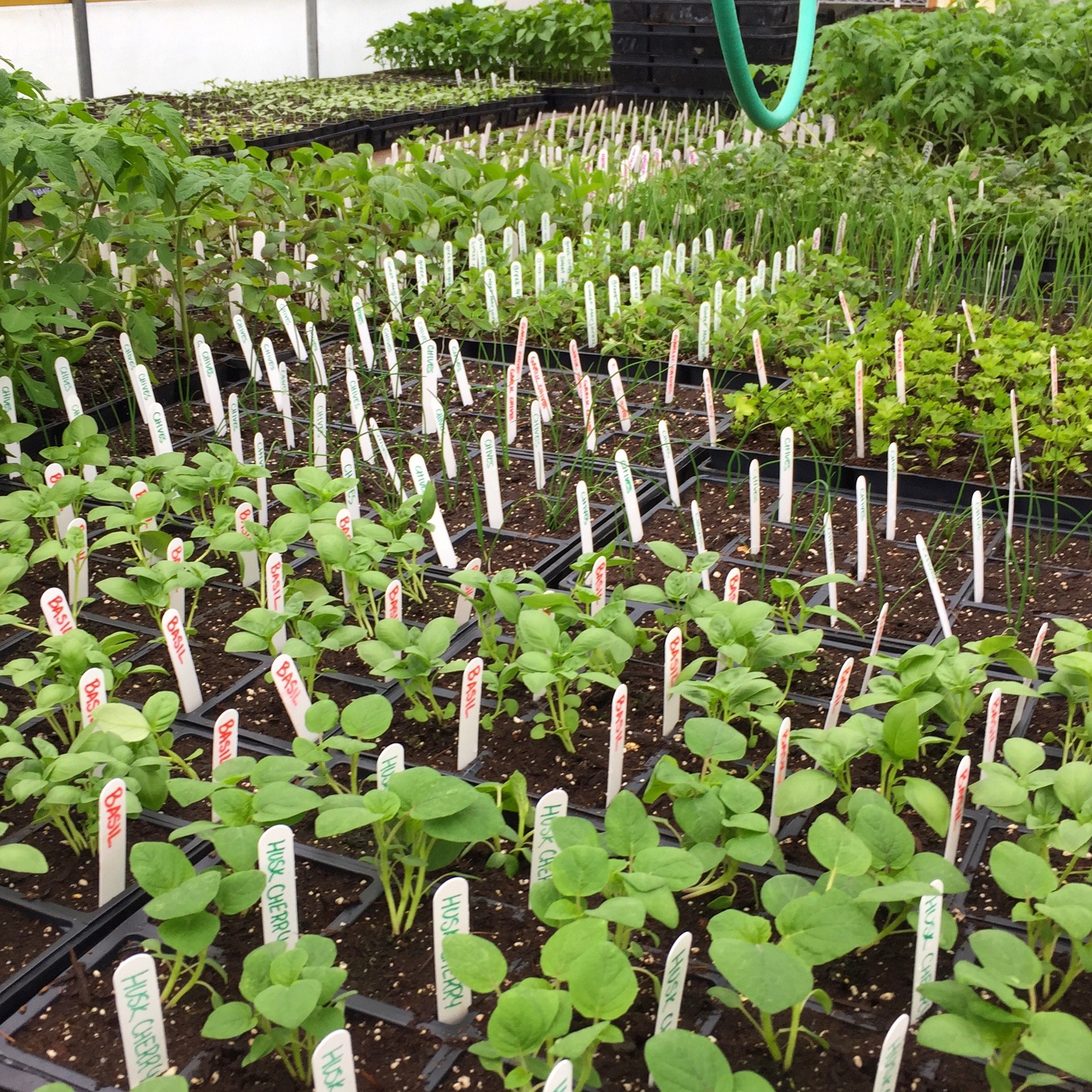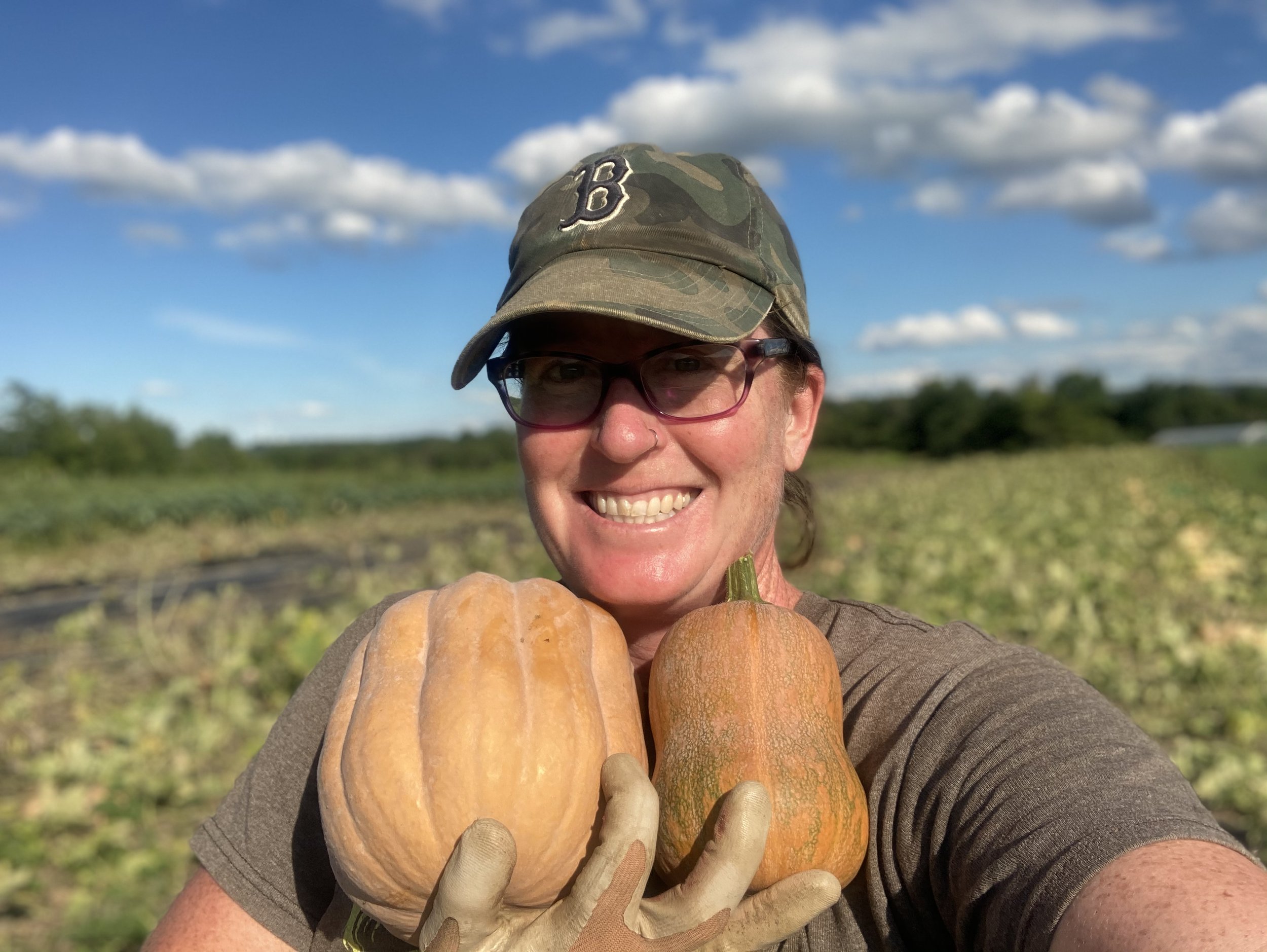The Nature of Time
/One of the things that I have a love/hate relationship with on the farm is time. Individual days and weeks can sometimes seem so long (especially when that harvest list runs onto three pages!), but since there’s so much repetition of patterns and tasks from year to year and day to day, it becomes hard to hold onto time beyond the general feel of seasonality.
But on a farm of our scale and crop mix, time is the main limiting factor!
Raising diversified veggies on a smaller scale is kind of a crazy thing to do (more on this topic in later blogs). Last year we had something around 700 plantings total, of over 150 crop varieties, and each was handled slightly differently at each stage (seed starting, greenhouse water and heat, planting, cultivation, harvesting, and post-harvest).
When you think of farming, likely tractors and planting and weeding pop into your brain. Yet the actual growing of the crops doesn’t even get anywhere near 50% of our time! We actually always have a few nice young guys call wanting specifically to be hired for a tractor work job each year, which we don’t really have. We use our tractor hard, but even after seven years of what feels like constant use, it barely logged over 2100 hours (that’s the tractor equivalent of a car’s 100,000 mile mark or so). It works out to about 300 hours a year, which spread out over 30 weeks of active field work, is only about 5 hours a week of sitting down tractor time each for me and for Matt!
Note Beulah’s careful supervision of the plow. For some reason, the plow and the field conditioner (but not any of our ten other tractor implements) require constant monitoring?
In 2021, we took out a loan to build a shiny new heated greenhouse. We filled it up almost immediately (I have utterly no idea how we managed to grow almost the same number of flats in our old 17x36’ one for so long—the new one is 30’ x 72’ and literally was filled to the brim).
My old greenhouse was bought in 2004, so this addition really impacted the economics of starting seeds for us. On one hand, we have to pay for the tunnel and the added heat needs, but on the other hand, we are saving A LOT of time on shuffling flats and banging into each other all the time. However, we needed to recalculate what it costs to grow a flat so we know how much to sell plants for, and to guide our annual decision of if things that can be both directly seeded into the field or seeded into the greenhouse and transplanted later make more sense one way or another. (For instance, in spring we transplant spinach since it gets a big jump to be ready for the first CSA boxes, but in summer it’s more cost and time efficient to just seed spinach in the ground.)
All the seedlings getting big for CSA shares and farmers market sales
This greenhouse math and stop-watching seedings started our first year of doing time analysis of how long things take (extra shout out to Rachel for being the best at remembering to do so and leaving reams of helpful notes for me this winter)! In case you are farming along at home, or a math nerd, when the greenhouse heat is running, it costs us between $25 to $40 per day to run the greenhouse for both heating and watering (this doesn’t reflect construction costs or supplies/seeds). Yet what was most interesting to learn is that even with relatively high propane costs, the human time of watering flats costs as much as the heating as soon as it’s over 32 degrees at night (watering well is a skill that just eats up time, but also allows us to really observe crops for potential issues).
This inspired me to do a few more labor time analysis this summer—how many hours do we spend harvesting? Can our harvesting metrics improve? In the heat of the CSA—those 18 weeks where the CSA is going—we spend a solid 65% of our time as a farm team solely picking veggies, so any slow downs in harvest (or speed-ups) greatly impact how much time we have to do other tasks on the farm.
Harvesting daikons on a chilly morning, putting them into groups of ten for efficient boxing and counting!
We were a little short staffed this summer (we strive not to let this happen but some years it does), so I ended up having to harvest one crop for the week pretty much every Sunday morning. This labor shortfall did give me a nice controlled window, however, to time different crops and how long harvest and washing and packing runs.
I have to confess here—while harvesting is typically most of our team’s favorite work on the farm, it’s hands down my least favorite activity (which is too bad, because I’m the fastest harvester so I never get excused from it). What I love to do is WEED. I could weed 12 hours straight and be happy as a clam. Unfortunately, I never get to live my dream because we spend so much of our time managing the farm to have fewer weeds that I have to harvest rather than embrace my OCD heaven with a hoe.
Harvesting again… note the sad deficit of weeds in the background.
Anyhow, we didn’t perfectly capture everything, but the result of all this recordkeeping was that we have our first look at where we actually spend time on the farm (rather than where we “feel” like we spend time on the farm).
Because the feeling of time lies. If you are having fun or in the zone (or me with my hoe), you can look up and be amazing that it’s afternoon or the sun is setting. But other things FEEL like eternity. For instance, when we go into the zucchini or cucumber mines, it feels like all four of us have been harvesting fruits out of their scratchy walls and floors for eternity (or at least three hours). But the darn stopwatch tells us it’s only been 45 minutes.
This temporal reality check was super helpful this winter as we think about upgrades for the 2022 season. We farmers so often think about equipment upgrades on field work (like new plows or tillers or all that stuff), but through time analysis, it became clear that we really need efficiency tools to help with harvest and washing of the veggies! So greens spinners and more shade tents and things on wheels. A super unsexy cooler floor overhaul. And of course so many more tote bins to harvest in to!
More math next week! But we did a story (saved in favorites) on our Instagram if you want to see more of the time breakdown numbers!






